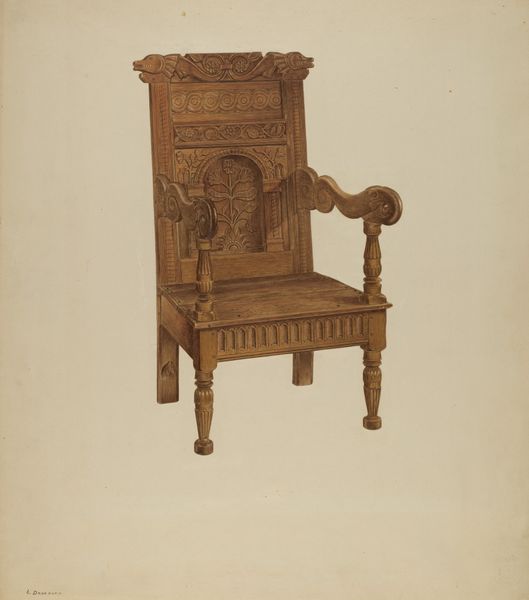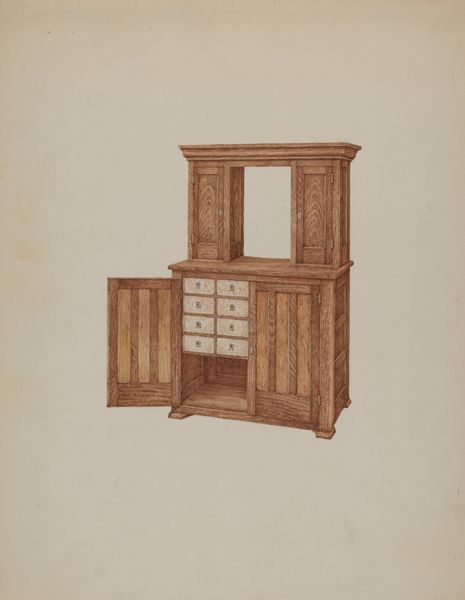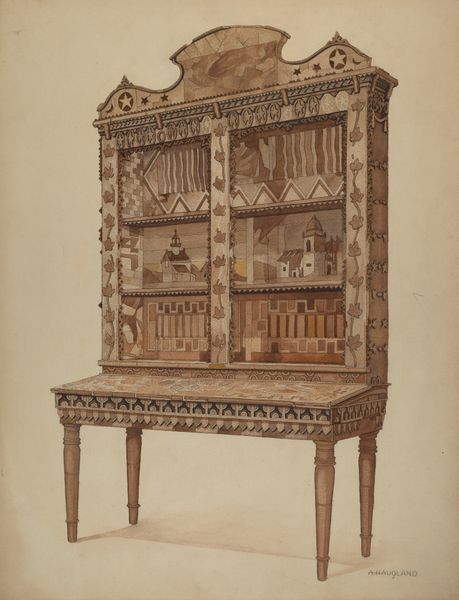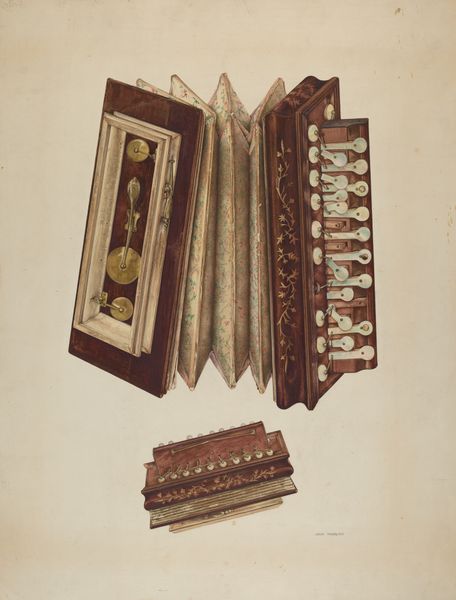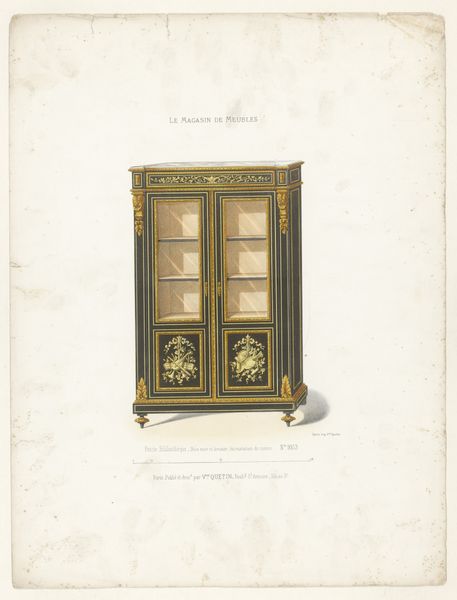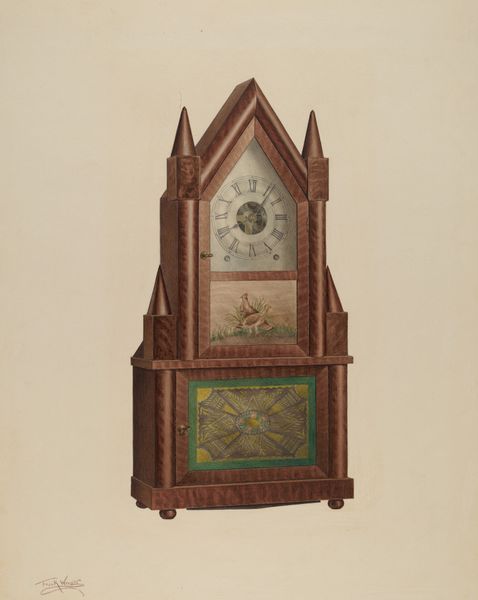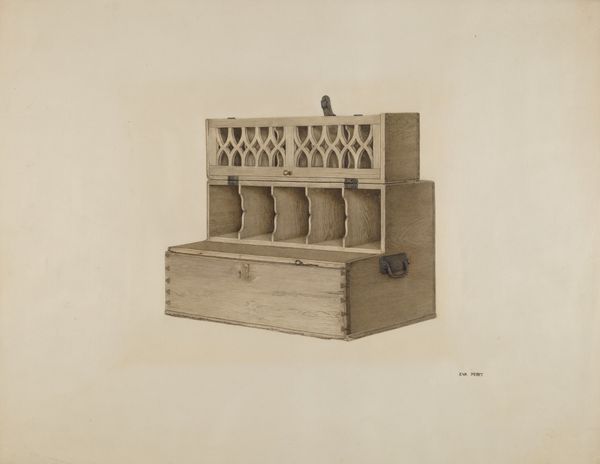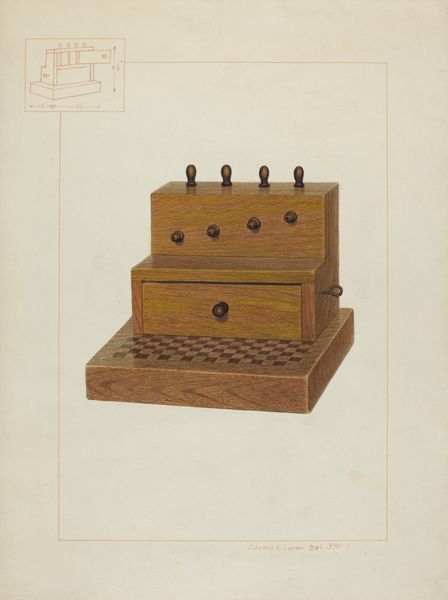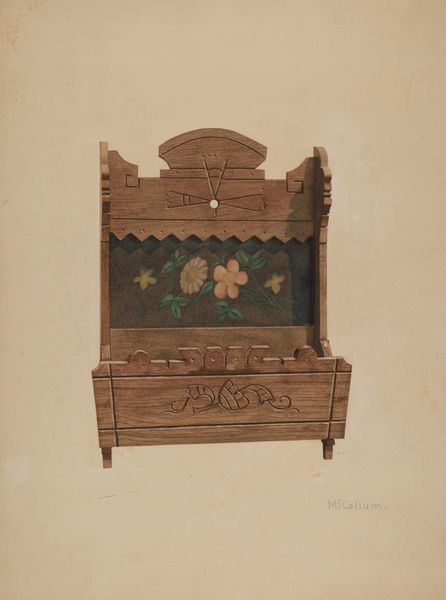
drawing, watercolor
#
drawing
#
watercolor
#
modernism
#
watercolor
#
realism
Dimensions: overall: 49.6 x 39.9 cm (19 1/2 x 15 11/16 in.) Original IAD Object: 21" high; base: 17" wide; 13" deep; 4 1/2" high; top section: 16 5/8" high; 15 1/2" wide; 6" thick
Copyright: National Gallery of Art: CC0 1.0
Editor: This is Joseph Ficcadenti's "Hume Cash Register," a watercolor and drawing from around 1939. I'm immediately struck by its somewhat muted palette. It feels both realistic and slightly dreamlike, given the precision and the ethereal quality of the watercolor. What's your take on this piece? Curator: Well, immediately I am interested in this rather mundane object, a cash register, rendered with such care. Consider the context: 1939. We're at the tail end of the Depression, and the country is still very much grappling with its effects. The production and consumption of goods are on everyone’s mind. What does it mean to elevate this commercial object – a tool of transaction – to the realm of art through detailed watercolor? Editor: That's a really interesting point. It challenges the whole idea of what's "worthy" of being depicted, doesn't it? Almost a democratic approach to art making, in a way. Curator: Precisely. Ficcadenti seems to be making a statement about value and labor. He's meticulously recreating something produced in a factory, reminding us of the human labor behind it, even as the object itself represents capitalism and trade. What do you notice about the materials themselves? The drawing combined with watercolor; what's the effect? Editor: I think the drawing gives it structure and precision, highlighting the mechanical aspects of the cash register, while the watercolor softens it, almost making it less imposing. It humanizes the object somehow, pushing past just its commercial function. Curator: Exactly! And think about watercolor as a medium: relatively inexpensive and accessible, traditionally associated with craft or hobby. It further blurs the lines between "high art" and everyday practices, asking us to reconsider our assumptions about artistic value and material worth. It's not just about what is depicted, but how it is depicted that matters. Editor: I never thought about it like that, it's fascinating how much meaning can be extracted by considering the materials themselves! Curator: And Ficcadenti reminds us that the making of art is itself a form of labor, transforming an ordinary object into something that prompts reflection and ultimately adds cultural value.
Comments
No comments
Be the first to comment and join the conversation on the ultimate creative platform.

